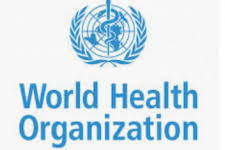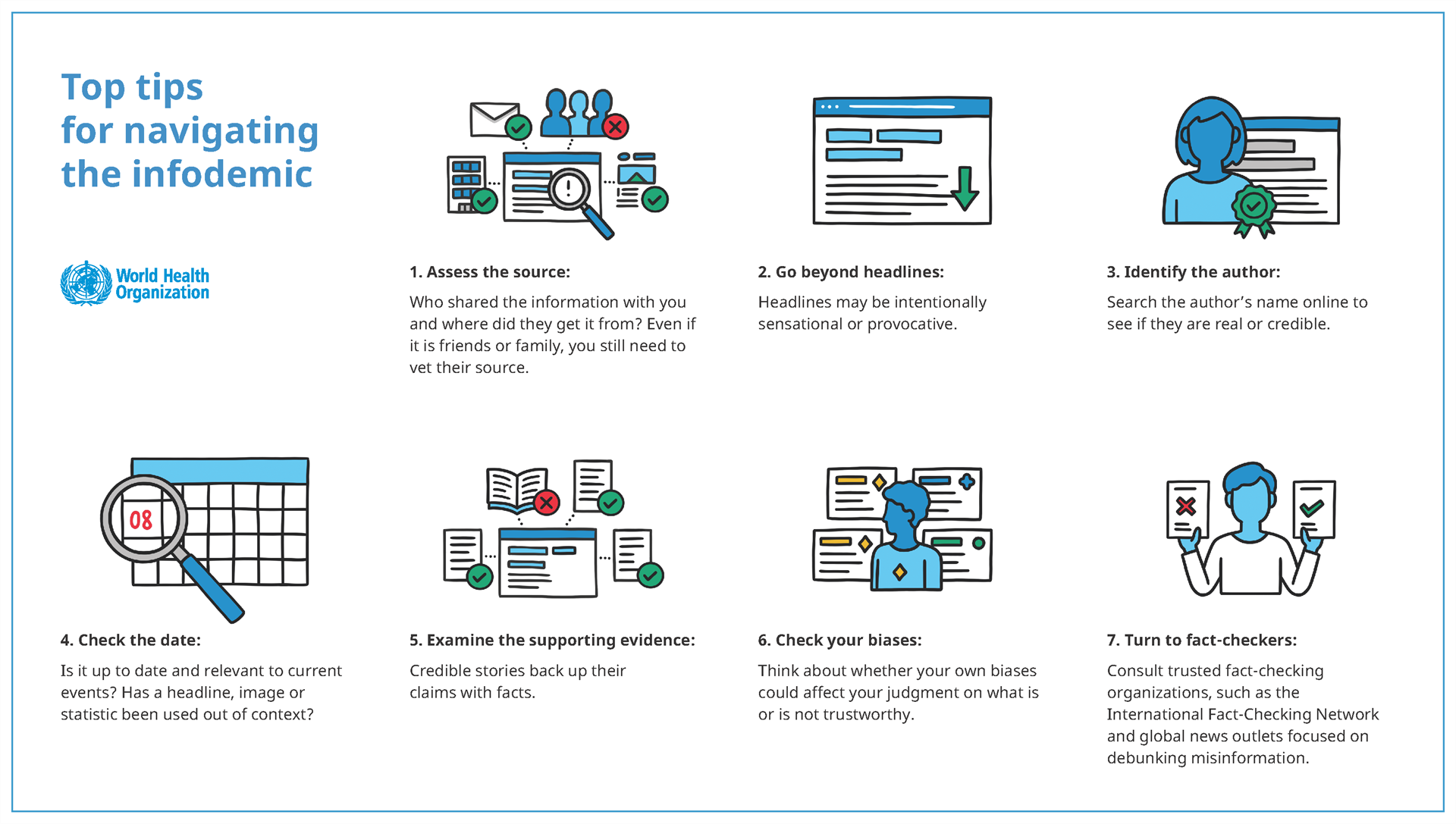We will flatten the curve of the infodemic

Navigating the Infodemic: Top Tips for Identifying Misinformation or Misinformation

We are all exposed to a large amount of COVID-19 information on a daily basis, and not all of it is reliable. Here are some tips to differentiate and stop the spread of misinformation. Due to COVID-19, most of us have a new word in our vocabulary: epidemiology. It is the branch of medical science that deals with the ways in which diseases are transmitted and can be controlled in a population. Now is the time to learn another new word: infodemiology. As humans, we are a curious and innovative species. We want to understand the world around us and stay up-to-date on the challenges we face and how to overcome them. One of the ways we do this is by searching and sharing information, a lot. Even scientists around the world are working hard to keep up with the thousands of studies that have appeared since COVID-19 appeared. But it's not just about scientific studies. There are also official communications from governments and health agencies around the world. Then there are news articles and opinion pieces, and posts from vloggers, bloggers, podcasters, and social media influencers. You can also view information shared by friends and family on social media or messaging apps. This is all called an infodemic - a flood of information about the COVID-19 pandemic. Infodemiology is the study of that information and how to manage it.
Navigating the Infodemic: Top Tips for Identifying Misinformation or Misinformation

1. Evaluate the source Who shared the information with you and where did they get it from? Even if it's friends or family, you still need to research their origin. To find fake social media accounts, see how long the profiles have been active, their number of followers, and their most recent posts. For the websites, see the "About Us" and "Contact Us" pages for background information and legitimate contact details. When it comes to images or videos, make it a habit to verify their authenticity. For images, you can use the reverse image search tools provided by Google and TinEye. For videos, you can use Amnesty International's YouTube DatViewer, which extracts thumbnails that you can enter into reverse image search tools. Other clues that a font may be unreliable or inaccurate include unprofessional visual design, poor spelling and grammar, or excessive capitalization or exclamation points.
2. Go beyond the headlines Headlines can be intentionally sensational or provocative to get a high number of clicks. Read more than just an article title - go further and see the full story. Look for more information than social media: Look for print sources like newspapers and magazines, and digital sources like podcasts and online news sites. Diversifying your sources allows you to get a better idea of what is or is not trustworthy.
3. Identify the author Look up the author's name online to see if it is real or credible. 4. Check the date When you find information, ask yourself these questions: Is this a recent story? Is it up to date and relevant to current events? Was a headline, image, or statistic used out of context?
5. Examine Supporting Evidence Credible stories support your claims with facts, for example, quotes from experts or links to statistics or studies. Check that the experts are trustworthy and that the links really support the story. 6. Check your biases We all have biases, and they influence the way we see what is happening around us. Assess your own biases and why you may have been drawn to a particular headline or story. What is your interpretation of it? Why did you react that way? Does it challenge your assumptions or tell you what you want to hear? What did you learn about yourself from your performance or reaction?
7. Go to fact-checkers When in doubt, consult trusted fact-checking organizations such as the International Fact-Checking Network and global news outlets focused on debunking misinformation, including the Associated Press and Reuters.
Information, misinformation and misinformation
Information is what we call things that are accurate to our current knowledge. For example, COVID-19 stands for coronavirus disease 2019 and is caused by the SARS-CoV-2 virus. One of the difficulties with any new pathogen, like this coronavirus, is that the information changes over time as we learn more about the science. Disinformation, on the other hand, is false information. Importantly, it is false information that was not created with the intention of hurting others. Misinformation is usually started by someone who really wants to understand an issue and cares about keeping other people safe and healthy. Then it is shared by others who feel the same. Everyone thinks they are sharing good information, but unfortunately, they are not. And depending on what is shared, misinformation can be quite damaging. At the other end of the spectrum is misinformation. Unlike disinformation, this is false information created with the intention of profiting from it or causing harm. That damage could be to a person, a group of people, an organization or even a country. Disinformation generally serves some agenda and can be dangerous. During this pandemic, we see it used to try to erode our trust in each other and in our government and public institutions.
Navigating Misinformation and Misinformation It's helpful to think about misinformation and misinformation that spread in the same way as viruses. One person can share fake news with their friends and family, and then a handful of them share it with more friends and family, and before you know it, potentially harmful or dangerous information is taking over everyone's news feed. But just as we can protect ourselves against COVID-19 with hand washing, physical distancing, and masks, we can curb the spread of misinformation and misinformation by practicing some information hygiene. Before you share, ask yourself these questions: How does this make me feel? Why am I sharing this? How do I know if it's true? Where he came from? Whose agenda could you be supporting by sharing it? If you know something is false or if it makes you angry, don't share it to discredit or make fun of it. That only spreads misinformation or misinformation even more. Learn more about how you can report misinformation online. A good place to get reliable information is the websites of your country's Ministry of Health or the World Health Organization. However, remember: information will change as we learn more about the virus.
What it is doing WHO has developed a guide to help individuals, community leaders, governments and the private sector understand some key actions they can take to manage the COVID-19 infodemic. For example, WHO has been working closely with more than 50 digital companies and social media platforms, including Facebook, Twitter, LinkedIn, TikTok, Twitch, Snapchat, Pinterest, Google, Viber, WhatsApp and YouTube, to ensure that Science-based health messages from the organization or other official sources appear first when people search for information related to COVID-19. WHO has also partnered with the UK Government on a digital campaign to raise awareness of misinformation around COVID-19 and encourage people to report false or misleading content online. Additionally, WHO is creating tools to amplify public health messages, including its WHO Health Alert chatbot, available on WhatsApp, Facebook Messenger and Viber, to provide the latest news and information on how people can protect themselves. themselves and others from COVID-19. A version of this content was originally published on The Spinoff and has been adapted for use by the WHO in creative commons.
Related links
I mmunizing the public against misinformation
C ountering misinformation about COVID-19
P rotecting yourself in the infodemic






